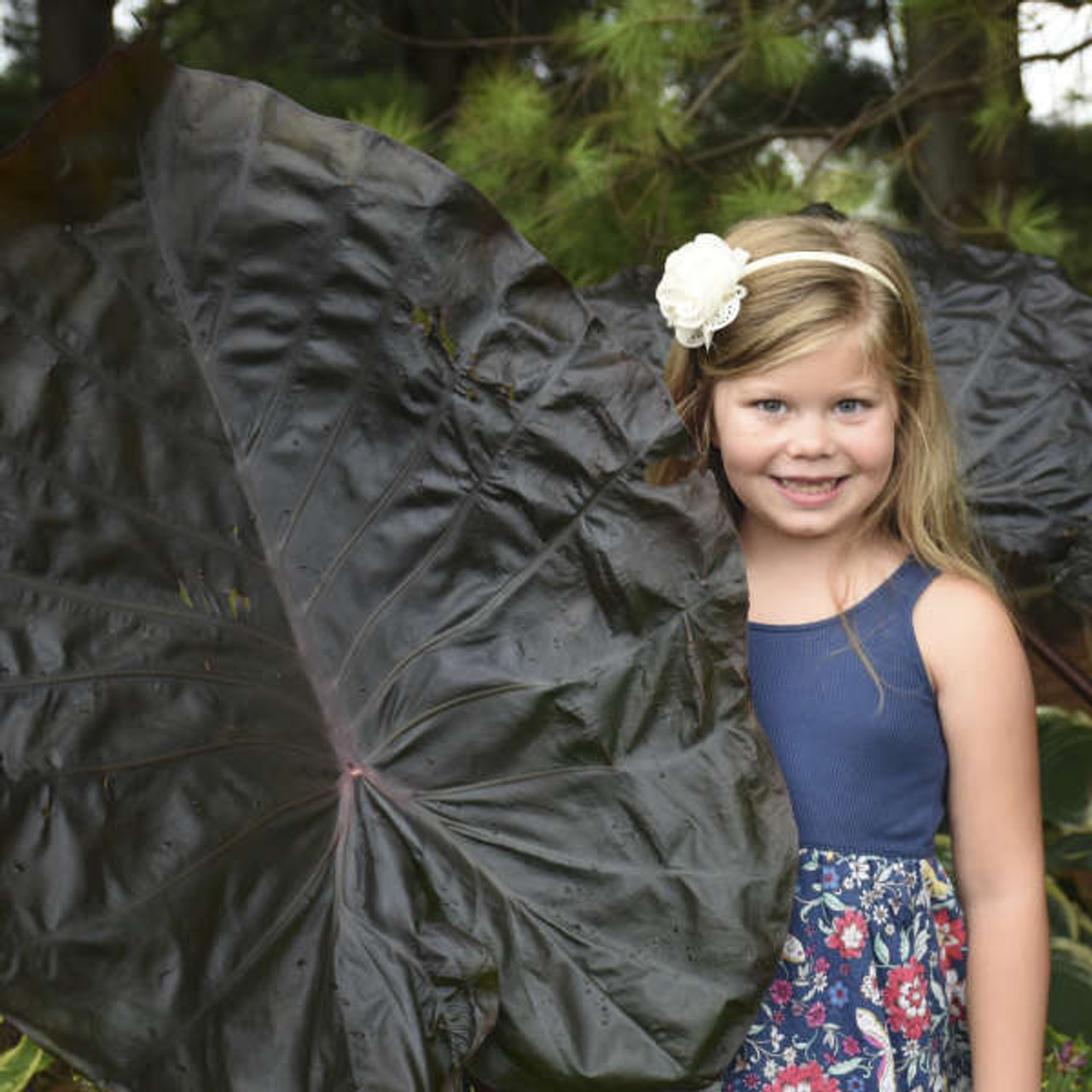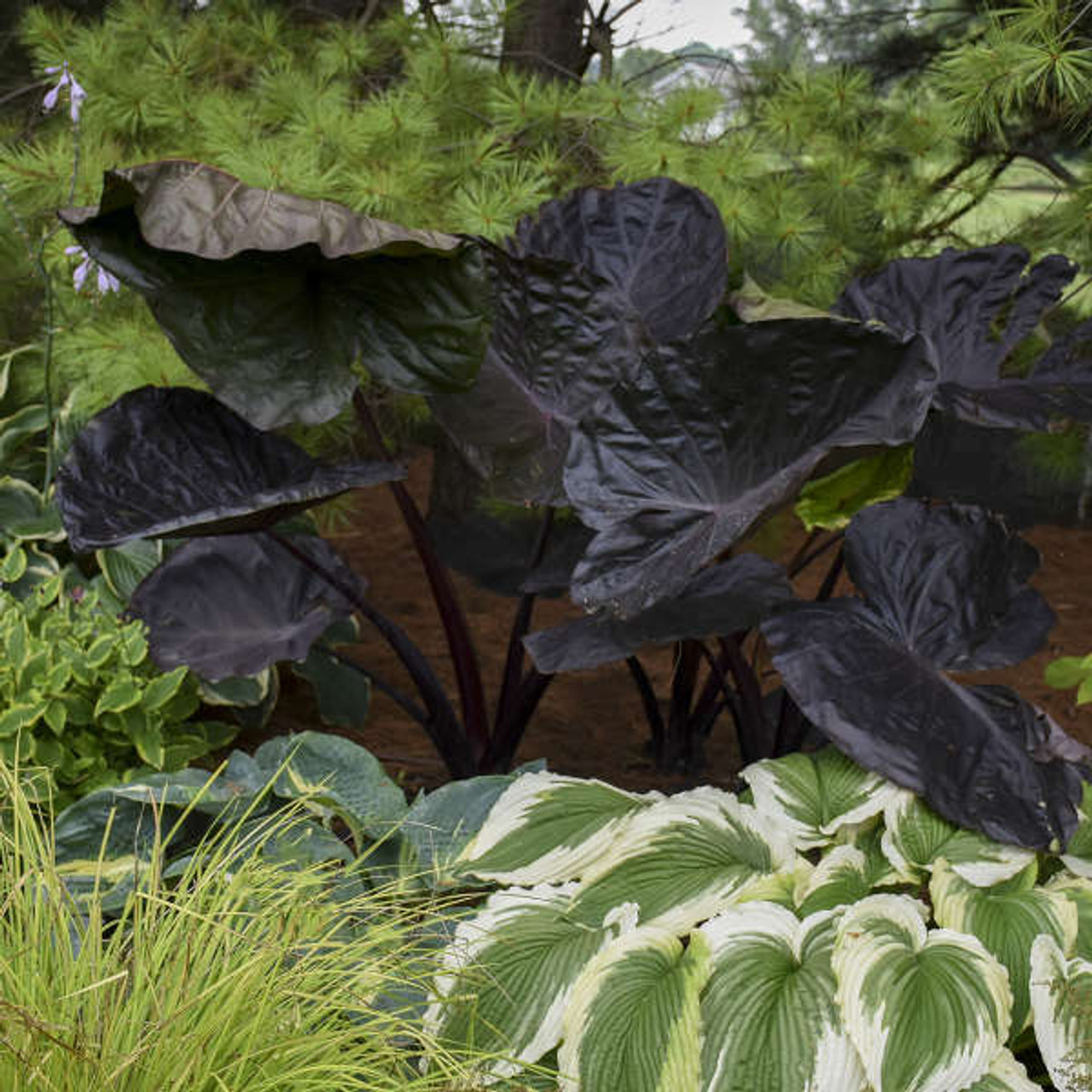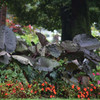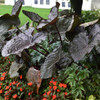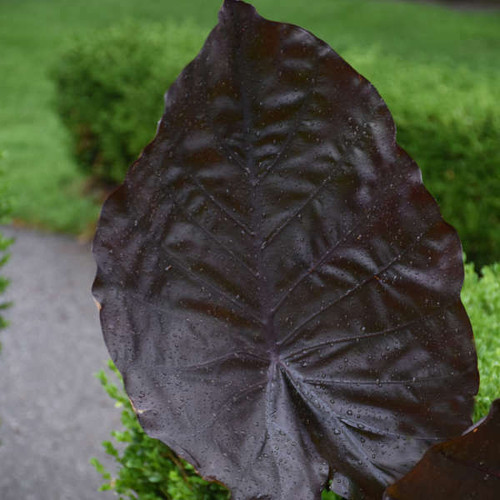Product Description
Colocasia 'Distant Memory' PP30292 (20)ct Flat
Common Name: Elephant Ear
This tropical plant forms huge, dark glossy mahogany leaves. Compared to 'Black Swan', this variety is shorter and has a fuller habit. While growing this plant, you'll appreciate its clumping nature, which translates to more vigorously filling out a pot and throwing up lots of new leaves.
When growing these plants in our greenhouse, they colored up nicely even under UV inhibitor plastic. This was a pleasant surprise since often purple foliage plants require direct UV exposure to bring out the darker pigmen
Colocasia is an outstanding tropical plant that is often grown as an annual in colder zones. It is a moisture loving plant that needs consistently moist to wet soil to perform best and achieve its maximum size. Colocasia will also grow in shallow water near the edges of ponds or bogs. This plant prefers full sun as long as sufficient moisture and humidity are provided. In dry climates, it is better sited in partial shade. Colocasias are heavy feeders, so the soil should be enriched with humus and other organic nutrients should be provided on a regular basis. Where Colocasia is hardy, it should be mulched well in winter to protect the central tuber.
Height: 4.0-4.5 Feet
Spread: 5.0-5.5 Feet
Hardiness Zones: 8,9,10
Foliage Color: Near-black shades
Full Sun (> 6 hrs. Direct Sun) to Part Shade (4-6 hrs. Direct Sun)
Average to Consistent Water Needs
Fertile Soil Quality
Deer Resistant
Rabbit Resistant
Growth Rate: Rapid
Container, Easy To Grow, Attractive Foliage, Mass Planting
Colocasia 'Distant Memory' is a captivating tropical plant known for its striking foliage and versatility in the garden. This in-depth exploration delves into the key characteristics, ideal growing conditions, and landscaping uses of this remarkable elephant ear variety, providing valuable insights for gardening enthusiasts.
Colocasia 'Distant Memory' is commonly known as "Elephant Ears" due to its large, dramatic leaves that resemble the ears of an elephant. This particular cultivar is named in honor of Harriet Walters of Walters Gardens.
USDA Hardiness Zones This Colocasia variety thrives in USDA hardiness zones 7b to 11. It can be grown as an annual in colder zones or overwintered indoors.
Overwintering In colder zones where Colocasia 'Distant Memory' is not hardy, it can be overwintered indoors. To do this, dig up the corms in the fall after the first frost and store them in peat moss in a cool, dry location that does not go below 45 degrees Fahrenheit. If the plant is grown in a large container, the entire container can be brought indoors to a frost-free area for overwintering. To get a head start in spring, the bulb can be planted in a pot and placed in a sunny window indoors in late winter to early spring.
Ideal Growing Conditions
- Soil Type Colocasia 'Distant Memory' prefers fertile, humusy, organically rich, medium to wet soils. Amending the soil with compost or other organic matter is recommended. It performs well in average to rich soil and can even tolerate shallow water. As Colocasias are heavy feeders, the soil should be enriched with humus, and other organic nutrients should be provided regularly.
- Sunlight Requirements This plant thrives in full sun to part shade. While it prefers full sun, in dry climates, it is best to provide some shade, especially during the hottest part of the day. When grown in a greenhouse, it can even color up nicely under UV inhibitor plastic, which is unusual for purple foliage plants that often require direct UV exposure to develop their darker hues.
- Water Needs Colocasia 'Distant Memory' is a moisture-loving plant that needs consistently moist to wet soil. It is crucial to provide regular watering, especially during dry periods, and avoid letting the soil dry out. However, overwatering should be avoided to prevent root rot.
- Size and Growth Habit This Colocasia variety typically grows 4 to 5 feet tall and 4 to 5 feet wide. It can reach up to 4.5 feet tall and 5.5 feet wide. It has an upright, arching habit with huge, elegant mahogany leaves that emerge from a thick, basal clump. The stems are jet-black and glossy, adding to the plant's dramatic appearance. Compared to 'Black Swan', 'Distant Memory' is shorter and has a fuller habit, making it suitable for a wider range of garden applications.
Landscaping and Gardening Uses Colocasia 'Distant Memory' offers exceptional versatility in the landscape:
- Containers: Its dramatic foliage makes a bold statement in large containers, especially when combined with brightly colored annuals.
- Garden Beds: Imagine a Colocasia as the centerpiece of a circular bed, its large leaves creating a dramatic focal point surrounded by lower-growing plants. The contrasting textures and colors will draw the eye and add visual interest. It can also be used as a backdrop for other plants, creating stunning contrasts with its dark foliage. Combine it with other tropical plants like cannas, bananas, and ferns to create a lush, tropical oasis in your garden.
- Water Features: It thrives near water and can be planted around ponds, fountains, or pools. Some Colocasia varieties, including 'Distant Memory', can even be grown in wet spots or boggy areas.
- Mass Plantings: Planting it in masses creates a dramatic and exotic look.
- Houseplant: It can be grown indoors as a houseplant, adding a touch of the tropics to your home.
- Common Name: Elephant Ears
- USDA Hardiness Zones: 7b-11
- Soil Type: Fertile, humusy, organically rich, medium to wet
- Sunlight Requirements: Full sun to part shade
- Water Needs: Consistently moist to wet
- Size: 4-4.5 feet tall, 5-5.5 feet wide
- Growth Habit: Upright, arching, clumping
- Landscaping Uses: Containers, garden beds, water features, mass plantings, houseplant
Colocasia 'Distant Memory' is a truly remarkable plant that offers both beauty and versatility to any garden. Its striking foliage, adaptability to various conditions, and ease of care make it an excellent choice for both novice and experienced gardeners. By understanding its ideal growing conditions and exploring its diverse landscaping uses, you can unlock the full potential of this dramatic tropical plant and create a captivating garden that truly stands out. As an added bonus, it is deer-resistant, offering peace of mind to gardeners who struggle with these herbivores. This cultivar, named after Harriet Walters, is not only a stunning addition to any garden but also serves as a reminder of the ongoing research for Alzheimer's disease, as a portion of the proceeds from its sale goes towards this cause.
Other Details
The most important part of the plant is its root system. Healthy roots are the foundation of a healthy, vibrant plant. The type of plug container used is based on the specific needs of the plants. Perennials offered as bare root traditionally perform better when planted as bare root.Planted in a specialized mix, potted plants have well established root systems. Top growth stage will vary depending on the current life cycle and time of year when shipped. In Winter and early Spring dormant plants may be shipped. Dormant plants may be planted right away, even before the last frost date.
Most bare root varieties are field grown for at least one season, though Hemerocallis and Hosta are grown for two seasons. The bulk of the soil is removed during the harvesting process and the tops of most varieties are trimmed back to the crown. They are graded, packed in shredded aspen or sphagnum moss and stored in freezers until ready to be shipped.
See our Container Sizes and Bare Root Perennials pages for more information.
Plant information and care is provided in the Overview section, Plant Genus Page and general information is provided in the Planting Care & Guides. Additional questions can be asked on each Plant page.
Plant Spacing: Using the maximum mature spread or width of a plant to guide spacing, ensures space to grow to full size. To fill an area sooner, plant them closer together. Just remember, future thinning or transplanting may be needed.
Water: Keep a close eye on newly planted perennials, especially throughout the first growing year. Most early plant loss is due to too much or too little water!



